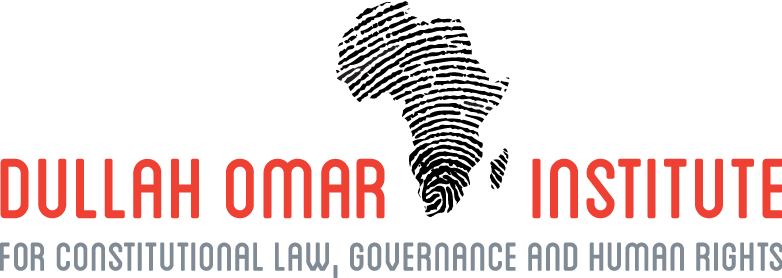The role of municipalities in protecting communities against possible harmful mining
The environment insidiously becomes polluted with members of these communities, particularly the elderly and children inhaling coal dust which makes them sick and their houses cracking because of the drilling and blasting taking place on a daily basis. If the area is governed by a traditional authority, consultation regarding mining activities tends to be limited to the traditional authority. Without recourse from the relevant authorities, namely, local and national government, a community’s last resort is to inevitably take a stand and protest against harmful mining in their communities. This article examines the role a municipality can play in protecting communities against harmful mining activities. It argues that municipalities can use their municipal planning power, as provided in the Constitution and given effect by the Spatial Planning and Land Use Management Act 16 of 2013 (SPLUMA), to protect communities against harmful mining activities.
Background
In many rural areas across South Africa, community protests against the commencement or ongoing harmful mining activities by members of the community have taken place. There are recent, notable community protests of this nature which garnered sufficient media attention. In the Eastern Cape, in a village called Xolobeni, a group of community members have waged a decade long campaign to fend off an Australian company that wanted to mine titanium in the red dunes behind their homes. In KwaZulu-Natal, on the outskirts of Dannhauser, community activists were shot, injured and arrested by the police while protesting against Ikwezi coal mine in Dannhauser for its harmful mining activities which caused air pollution, the cracking of houses and the death of livestock. In a unified effort in August 2022, a group of about 100 citizens, under the banner of Mining Affected Communities United in Action (MACUA), picketed outside Parliament while they waited for officials to receive their memorandum. This group consisted of protesters from Limpopo, Free State, Mpumalanga, Gauteng, KwaZulu-Natal and North West provinces. The MACUA demanded that the Department of Mineral Resources see to it that communities where there are mining operations are meaningfully consulted, and that prior and informed consent is obtained before mining operations can commence. This was because mining operations often result in the forceful removal of people and diseases caused by air pollution and water contamination. In particular, a female protester from Limpopo pointed out that before mining companies commenced their operations in her community, they used to farm and sell their veggies for a living, but that they are no longer able to do so because mining companies removed them from their land. What is particularly conspicuous in these cases is the absence of local government when communities stand up against harmful mining activities. Therefore, the question is why is this the case when a municipality can “say no” to harmful mining on the basis of its municipal planning authority.
The role of municipalities in protecting communities against harmful mining
SPLUMA empowers municipalities to manage the use of land throughout the Republic, including in areas governed by traditional leaders in terms of a municipal spatial development framework (MSDF) and land use scheme. A MSDF articulates the spatial vision of the municipality while a land use scheme is the main instrument that controls the use and development of land within a municipal area. This means a municipality has the power to decide what can be built where or which land uses apply within a particular area within its municipal area. This power applies even to mining operations. While a mining activity is sanctioned by the national Department of Minerals and Energy through the issuing of mining permits, the Constitutional Court’s landmark Maccsands judgment made it clear that a mining activity may not proceed if the land use is not permitted by the municipality’s land use scheme. The municipality can “say no” to the mining on the basis that the area is not zoned for mining. This is particularly important in the context of mining activities which are taking place in some areas inhabited by rural residents where mining should clearly not be taking place. This explains why residents and livestock in these areas often suffers from diseases caused by air pollution and water contamination, as well as their houses damaged due to the constant drilling and blasting. What happens if the mining company submits a rezoning application to the municipality to amend the zoning scheme to accommodate mining?
SPLUMA contains five principles that municipalities and traditional leaders must, depending on the context adhere to when taking land use decisions. Three principles are applicable and relevant in this regard. First, the principle of spatial sustainability ensures that prime and unique agricultural land is protected and that urban and rural communities are viable. Second, the principle of spatial resiliency means that municipalities must develop spatial plans and land use management systems that will accommodate greater flexibility in order to ensure the sustainability of livelihoods which are most vulnerable during economic and environmental crises. Lastly, the principle of good administration envisages an integrated approach to land development application processes that is transparent and provide an opportunity to affected parties such as municipalities, traditional leaders and communities to make an input. It is submitted that the municipality can decline the application to rezone the residential area if that rezoning would go against these three principles. Therefore, it can be said that the SPLUMA principles, if implemented, add another layer of protection against possible harmful mining.
Commentary
The absence of local government when communities stand up against harmful mining needs to be questioned and brought under the microscope as soon as possible. Why is it that in the ongoing debates about communities “right to say no” to harmful mining as confirmed by the Courts, local government is absent? Is it because local government’s authority “to say no” to mining, is not understood or appreciated? If it is understood or appreciated, why are municipalities not stopping or preventing harmful mining activities? Are mining companies paying bribes to municipal officials to secure permission to mine or is because once the mining permit has been granted by the national government, the municipality is “too small” to stop it? These questions are important not only for the rural communities but also municipalities given that harmful mining does not only affect these communities but also municipalities as well. For instance, mining in rural areas does not usually come with direct financial benefits for the municipality. This is because there is not much revenue from property rates on the infrastructure, and the mining company usually generates or purchases its own electricity and water outside the municipality. However, the municipality will be faced with the negative consequences of harmful mining activities such as environmental degradation, community unrest and dilapidated sites after the mining ends. So, on the face of it, municipalities do not have a clear interest in allowing harmful mining activities. If municipalities are simply sleeping on the job, rural communities have the power to force municipalities and traditional leaders to take land use decisions that give effect to the SPLUMA principles and protect communities against harmful mining.
By Xavia Poswa, Doctoral Researcher

